INVITED SPEAKERS:

Physics Department, Politecnico di Milano, Italy
Title: Ultrafast charge transfer in heterostructures of two-dimensional materials
Giulio Cerullo is a Full Professor with the Physics Department, Politecnico di Milano, where he leads the Ultrafast Optical Spectroscopy laboratory. Prof. Cerullo’s research activity covers a broad area known as “Ultrafast Optical Science”, and concerns on the one hand pushing our capabilities to generate and manipulate ultrashort light pulses, and on the other hand using such pulses to capture the dynamics of ultrafast events in bio-molecules, nanostructures and two-dimensional materials (graphene, transition metal dichalcogenides ). He has published more than 450 papers which have received more than 20000 citations (H-index: 74). He is a Fellow of the Optical Society of America and of the European Physical Society and Chair of the Quantum Electronics and Optics Division of the European Physical Society. He is the recipient of an ERC Advanced Grant (2012-2017) on two-dimensional electronic spectroscopy of biomolecules. He is on the Editorial Advisory Board of the journals Optica, Laser&Photonics Reviews, Scientific Reports, Chemical Physics, Journal of Raman spectroscopy. He is General Chair of the conferences CLEO/Europe 2017, Ultrafast Phenomena 2018 and the International Conference on Raman Spectroscopy 2024.
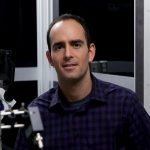
University of Victoria, Canada
Title: Quantum Plasmonics: Trapping Single Erbium Emitters and Bright Upconversion by Light Induced Tunneling
Reuven Gordon is a Professor in the Department of Electrical and Computer Engineering, University of Victoria. He has received a Canadian Advanced Technology Alliance Award (2001), an Accelerate BC Industry Impact Award (2007), an AGAUR Visiting Professor Fellowship (2009), the Canada Research Chair in Nanoplasmonics (2009-2019), the Craigdarroch Silver Medal for Research Excellence (2011), a Fulbright Fellowship (2016), an NSERC Discovery Accelerator (2017), the Faculty of Engineering Teaching Award (2017) and an JSPS Invitational Fellowship (2023). He is a Fellow of the Optical Society of America (OSA), the Society for Photographic Instrumentation Engineers (SPIE), and the Institute for Electrical and Electronic Engineers (IEEE). Dr. Gordon has authored and co-authored over 170 journal papers (including 13 invited contributions). He is co-inventor for five patents and two patent applications. Dr. Gordon is a Professional Engineer of BC. Dr. Gordon has been recognized as an "Outstanding Referee" by the American Physical Society. He has also served as conference chair for several conferences, including SPIE NanoScience + Engineering and NFO16. Dr. Gordon is an Associate Editor for Optics Express and on the Editorial Advisory Board for Advanced Optical Materials.
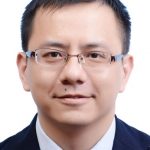
Shanghai Institute of Technical Physics, CAS, China
Title: Recent advances of epitaxial InGaAs(Bi,P) thin films and SWIR photodetectors
Prof. Yi Gu received his B.S. and Ph. D degree from Nanjing University in 2004 and Shanghai Institute of Microsystem and Information Technology (SIMIT), Chinese Academy of Sciences (CAS) in 2009, respectively. He worked at SIMIT since 2009 and moved to Shanghai Institute of Technical Physics since 2018. His recent research interests include molecular beam epitaxy of III-V semiconductors and short-wave infrared detectors. He has coauthored one book, six book chapters and about 110 papers in peer-reviewed journals. He was elected as the member of Youth Innovation Promotion Association CAS in 2013, IEEE senior member in 2015, and Shanghai Rising-Star in 2017. In 2012 and 2015, he was honored the 2nd prize of Science and Technology Progress Award and 3rd prize of Technical Innovation Award in Shanghai, respectively.
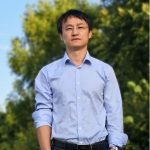
Shanghai Institute of Technical Physics, CAS, China
Title: Novel infrared photodetectors manipulated by localized fields
Weida Hu received his B. S. and M. S. degree in Material of Science from Wuhan University of Technology, Wuhan, China, in 2001 and 2004, respectively, and Ph.D. degree (with honors) in Microelectronics and Solid-State electronics from the Shanghai Institute of Technology Physics, Chinese Academy of Sciences, in 2007. He is currently a full professor on fabrication and characterization of infrared photodetectors in Shanghai Institute of Technology Physics, Chinese Academy of Sciences. He has authored or coauthored more than 150 technical journal papers and conference presentations. He gets National Science Foundation for Distinguished Young Scholars in 2017, National Science Foundation for Excellent Young Scholars in 2013, Ten Thousand Talents Program for Young Talents in 2015, and China Youth Science and Technology Award in 2019. He is also serving as the Associate Editor of Infrared Physics & Technology, the Executive Editor of Optical and Quantum Electronics, the program committee of SPIE DCS Defense and Security - Infrared Technology and Applications, and the program committee of the International Conference on Numerical Simulation of Optoelectronic Devices (NUSOD).

University of Illinois – Urbana Champaign, USA
Title: Harvesting Charge Carriers and Free Energy from Plasmonic Excitations
Prashant Jain grew up in Bombay, where he completed his undergraduate education. He obtained his PhD working with M. A. El-Sayed at Georgia Tech, following which he was a postdoctoral fellow at Harvard. After a Miller Fellowship at UC Berkeley, he joined the faculty of the University of Illinois at Urbana-Champaign, where he is an Associate Professor of Chemistry, of the Materials Research Lab, and of the Beckman Institute. He is also a Richard and Margaret Romano Professorial Scholar and an Affiliate Faculty Member in Physics. Prashant’s lab studies light-matter interactions on the nanoscale. His lab is best known for using nanoscale-confined light for artificial photosynthesis and for probing the inner workings of complex materials and catalysts. Alongside, the lab has discovered new solid-state phases and expanded the phenomenon of plasmon resonances beyond metal nanostructures to semiconductor nanocrystals. His collective work has been cited over 22,000 times. He has been listed among Highly Cited Researchers by Clarivate Analytics and Elsevier Scopus. Prashant is a Fellow of the Royal Society of Chemistry, a Beilby medalist, a TR35 inventor, and a recipient of the Presidential Early Career Award in Science and Engineering. Prashant serves on the Editorial Advisory Board of the Journal of Physical Chemistry and is the lead developer of nanoDDSCAT, an open-source computational toolkit for nano-optics and photonics. His research webpage can be found at https://nanogold.org
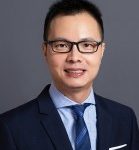
Zhejiang University, China
Qiang Li received the B.Sc. degree and M. Eng from the Harbin Institute of Technology, Harbin, China, in 2005 and 2007, respectively. He obtained the Ph.D. degree in Microelectronics and Applied Physics from the Royal Institute of Technology (KTH), Stockholm, Sweden, in 2011. In 2011 he joined College of Optical Science and Engineering, Zhejiang University, as an assistant professor. He became an associate professor in 2013 and a full professor in 2018.
His research interest focuses on energy-efficient silicon-/metal-based optoelectronic materials, devices and their applications in optical communications and energy utilization. He has published over 40 reviewed research papers as first/corresponding author in international journals including Light: Science & Applications, Laser & Photonics Review, Nanoscale, Advanced Optical Materials. with a total citation of over 700. He has given more than 20 invited talk in international conferences. He also served as the TPC chair of ISPN 2018, the organizer of Photo-thermal Conversion session in META 2017, and the TPC member of many international conferences.
He is the PI of one National Key Research and Development Program of China and three National Natural Science Foundations of China
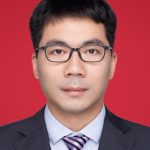
Soochow University, China
Title: Opto-electro-thermal investigation of radiative cooling devices
Professor Xiaofeng LI received B.Eng. and Ph.D. degrees in Communication Engineering from Southwest Jiaotong University, China, in 2002 and 2007, respectively. From 2007 to 2010, he was working as a research fellow in School of EEE, Nanyang Technological University, Singapore. From 2010 to 2011, he was employed in Imperial College London as a research associate. He began to work in Soochow University as a full professor since January 2012. He is now the dean of School of Optoelectronic Science and Engineering, Soochow University. His interests include nanophotovoltaics, surface-plasmon physics and devices, hot-electron photodetection, optical sensing, etc. He has already authored more than 130 ISI-index journal papers in Advanced Materials, Advanced Energy Materials, ACS Nano, Applied Physics Letters, etc., and is an active referee for over 40 journals. Prof. Li is a senior member of IEEE and Chinese Optical Society. He is serving as an associate editor of OSA Applied Optics and IEEE Photonics journal.
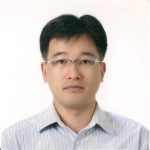
Korea University, Korea
Title: Ultrafast and Efficient Transport of Hot Plasmonic Electrons by Graphene for Pt Free, Highly Efficient Visible-Light Responsive Photocatalyst
Dr. Dong-Kwon Lim is an associate professor at KU-KIST Graduate School of Science and Technology in Korea University (Seoul, South Korea) (2015 ~ current). After he finished his BS and MS degree of Chemistry from Kyungpook National University (1996), he worked for more than 10 years in the pharmaceutical research institutes of the company in Korea. After he received his Ph. D. degree of Chemistry from Seoul National University in 2011, he started his postdoctoral research at MIT (David H Koch Institutes, Advisior: Prof. Robert Langer Lab) and Harvard Medical School (Children’s Hospital Boston) (2011~2013). Dr. Lim has made pioneering contributions to the field of DNA-based nanostructure synthesis for single molecule surface-enhanced Raman scattering (SERS) and the developments of new bio detection & therapeutic strategies based on organic/inorganic hybrid nanomaterials. Another field he is focusing is the use of plasmonic nanomaterials as a photocatalysts for various reactions such as CO2 conversion and C-C coupling reactions.

University of Sydney, Australia
Title: Microscopy characterisation of Lithium conducting solid electrolyte Li1 + xAlxGe2 − x(PO4)3
Prof Liu received his PhD degree from the University of Melbourne in 1999. After his PhD, he worked at the University of Queensland and then at the National Institute for Materials Science in Japan as a Science and Technology Agency (STA) Fellow before joining the University of Sydney in 2004. At Sydney, he first worked at the Australian Centre for Microscopy and Microanalysis where he was awarded a Queen Elizabeth II Fellowship (QEII). He joined the School of Chemical and Biomolecular Engineering in 2012 and is currently the Research Director of his school.
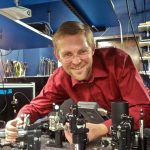
University of Colorado Boulder, USA
Title: Tip-enhanced strong coupling: Broadband room temperature nano-cavity QED with single emitters
Markus Raschke is professor at the Department of Physics, Department of Chemistry, and JILA at the University of Colorado at Boulder. His research is on the development and application of new nano-scale nonlinear and ultrafast spectroscopy techniques to control the light-matter interaction on the nanoscale. These techniques allow for imaging structure and dynamics of molecular and quantum materials with nanometer spatial resolution. He received his PhD in 2000 from the Max-Planck Institute of Quantum Optics and the Technical University in Munich, Germany. Following research appointments at the University of California at Berkeley, and the Max-Born-Institute in Berlin, he became faculty member at the University of Washington in 2006, before moving to Boulder in 2010. He is fellow of the Optical Society of America, the American Physical Society, and the American Association for the Advancement of Science.
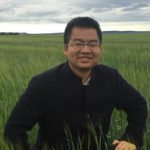
Huazhong University of Science and Technology, China
Title: Infrared photodetectors based on PbS colloidal quantum dots
Jiang Tang is a full professor at Wuhan National Laboratory for Optoelectronics, Huazhong University of Science and Technology (HUST). He obtained his bachelor’s degree from University of Science and Technology of China, and his Ph. D. from University of Toronto under the supervision of Prof. Edward H. Sargent at 2010. He joined HUST in 2012 after one year and half postdoctoral research at IBM T. J. Watson research center. He has published >150 papers including Nature, Nature Photonics and so on with nearly 10000 times citation. He is the recipient of the National Funds for Exceptional Young Scholars. His current research focuses on colloidal quantum dot infrared photodetectors, halide perovskites for X-ray detection and light emitting diodes, and antimony selenide thin film solar cells.
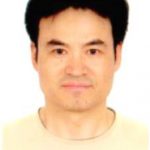
Institute of Chemistry, CAS, China
Title: Interfacial passivation for perovskite solar cells
Jizheng Wang is a device physicist, and received both his B.S. degree (1994) and M.S. degree (1997) from Lanzhou University and earned his Ph.D. degree from the Institute of Semiconductors, Chinese Academy of Sciences (2001) in the area of semiconductor physics. He did post-doctoral research on organic transistors at Cavendish Laboratory of Cambridge University (2002-2005). He has published more than 100 scientific papers in distinguished international journals such as Nature Materials, Energy & Environmental Science, Advanced Materials, ACS Energy Letters, Nano Energy, and Advanced Energy Materials. He is now a professor at the Institute of Chemistry, Chinese Academy of Sciences, and mainly focuses on device physics and engineering for a variety of semiconductor devices, including solar cells, photodetectors, transistors, and memory devices.
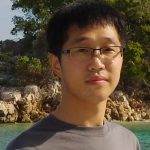
Jilin University, China
Title: Studies of Metal Halide Perovskite Nanocrystals at High Pressure
Guanjun Xiao is currently a professor of State Key Laboratory of Superhard Materials, College of Physics, Jilin University, China. His scientific interests focus on structure and properties of pressure-response materials, which will promote the potential applications in pressure switch, pressure sensing, trademark security and information storage. He, with collaborators, proposed the new concept of pressure-induced emission (PIE), and successfully achieved the bandgap tuning, as well as irreversible phase transition in low-dimensional materials. He has published more than 40 papers in peer-reviewed international journals, including Nature Commun., JACS, Angew. Chem., and CCS Chem., giving him an h-index of 21.
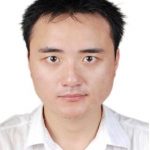
Nanjing University, China
Title: Large-scale plasmonic metamaterials and their applications in the visible region
Dr. Ting Xu is a Professor from National Laboratory of Solid-State Microstructures at Nanjing University. He received a joint Ph. D. in optical engineering from Chinese Academy of Science and University of Michigan in 2011. He performed his postdoctoral research at National Institute of Standards and Technology (NIST) in Maryland before joining Nanjing University in 2015. His research interest focuses on nanoplasmonics, metamaterials and advanced nanofabrication technologies.

Nanyang Technological University, Singapore
Professor Dao Hua ZHANG received his MSc degree from Shandong University, China and PhD degree from the University of New South Wales, Australia. He joined Nanyang Technological University in 1991 as a lecturer and is currently a full professor, Deputy Director, Centre for Semiconductor lighting and Display (LUMINOUS), and Director, Photonic Nano-Structure and Applications program. Professor Zhang’s main research interests include semiconductor materials, devices and technology, photonic metamaterials and applications. He has successfully completed over 30 research projects including the first $10M Competitive Research Program (CRP) of NTU. He has published over 520 papers in international journals and international conferences, 6 books/ proceedings, and 3 book chapters and he also filed 7 patents. Professor Zhang is the editor and guest editor of over 10 international journals. He is in International Advisory Committee of several international conferences. He has also chaired and co-chair of over 10 international conferences. He is the fellow of Institute of Physics (FInstP) and Institute of Engineering and Technology (FIET).
Rice University,USA
Title: 2D materials with chiral light-lattice interaction
Hanyu Zhu is the William Marsh Rice Trustee Chair Assistant Professor of Materials Science and NanoEngineering at Rice University. He obtained B.S. degree in Physics from Tsinghua University in 2011, and Ph.D. degree in Applied Science & Technology from the University of California at Berkeley in 2016. He performed postdoctoral research at Berkeley, and afterward started the Emerging Quantum and Ultrafast Materials Laboratory at Rice in 2018. He is the recipient of the Chinese Government Award for Outstanding Self-Financed Students Abroad and ORAU Ralph E. Powe Junior Faculty Enhancement Award.
-
Jiming Bao, University of Houston, USA
Self-formed 2D/3D Heterostructure on the Edge of 2D Ruddlesden-Popper Hybrid Perovskites Responsible for Intriguing Optoelectronic Properties and Higher Cell Efficiency - Alexander Govorov, Ohio University, USA
- Chennupati Jagadish, Australian National University, Australia
- Hao-Chung Kuo, National Chiao Tung University, Taiwan
- Federico Rosei, INRS–EMT, Canada
-
Han Zhang, Shenzhen University, China
All-optical Signal Processing based on microfiber nanophotonics devices